 Hurricane Watching on the Cheap
Hurricane Watching on the CheapBy Phil Berardelli
ScienceNOW Daily News
15 April 2008
Over the past several decades, scientists have vastly improved their ability to track hurricanes and cyclones. The best tools are weather satellites, which photograph the storms from various Earth orbits, and so-called hurricane hunters, rugged research aircraft filled with iron-nerved crew members. Aircraft are particularly important, because they can provide precise information about the intensity of the storm, which satellites cannot. These details help officials in coastal areas make critical decisions about whether to order evacuations as the storms bear down. But flying the aircraft costs millions of dollars per year.
Now a team from the Massachusetts Institute of Technology (MIT) in Cambridge has developed what might become a bargain-basement way to stay on top of hurricane intensity. The solution is a Cold War leftover: sensitive hydrophones that can perceive underwater sounds--whether generated by enemy submarines or an approaching tempest.
"We had a couple of strokes of good luck," says ocean scientist Nicholas Makris of MIT's Laboratory for Undersea Remote Sensing. He and former graduate assistant Joshua Wilson ran across some acoustic data collected in 1999 by sensors in deep water along the mid-Atlantic ridge. The National Oceanic and Atmospheric Administration (NOAA) put them there to monitor seismic activity, but the sensors happened to record the noise of winds as Hurricane Gert passed overhead. Then, within a day, a NOAA aircraft flew into Gert's eye. "There was almost a perfect correlation" between the wind speeds interpreted from the hydrophone data and the speeds collected by the aircraft, says Makris, who, along with Wilson, will report the findings in an upcoming issue of Geophysical Research Letters.
The technology is so inexpensive that just about any nation can use it routinely, Makris says. At its simplest, it requires only a small plane to drop a submerged hydrophone array in the path of an approaching storm and then collect the data by retrieving the sensors. A more elaborate variation is to station a permanent array that is wired to the mainland along known hurricane paths. That is what Makris has been planning to do in cooperation with the Mexican navy. They have planted such sensors near Isla Socorro, off the country's west coast, which is reputed to experience more hurricanes than anywhere on Earth--although the region has been untouched now for months. "We're still waiting," Makris says.
The technique is a "novel and practical approach" to gauging hurricane intensity safely and cheaply, says applied physicist Jeffrey Simmen of the University of Washington, Seattle. Simmen, an underwater acoustics specialist, says he likes the idea that the sensing technique is "truly passive," using the noise generated by hurricanes to collect data. That makes it nondisruptive to whales and other sound-sensitive marine creatures, he says.
WEATHER NOTE
Canyoners on fatal trip missed severe weather warning
As Elim Christian College in Auckland grieves over the deaths of six students and a teacher in a flash flood in on Tuesday, questions have been asked about the response to a severe weather warning.
The students and teacher were on a canyoning trip run by the Sir Edmund Hillary Outdoor Pursuits Centre near the Tongariro National Park.
The centre says it did not receive a weather forecast predicting heavy rain.
However, the MetService says it issued a severe weather warning - the most serious caution possible - for the area at 8.30am on Tuesday, forecasting steady rain with sudden pockets of heavy downpours. MetService forecasting manager Peter Kreft says the warning contained an extra comment to watch for rapidly rising rivers.
The centre's chief executive, Grant Davidson, says a MetService fax at 6.15 that morning, which was used to brief staff, had no indication of heavy rain warnings. He says the issue surrounding the forecast will be investigated in a review of the tragedy.
Recovery of the victims
Five of the group, including an adult instructor, were rescued on Tuesday night. Four students and a teacher were found dead at the same time. Search teams later found the bodies of two other teenagers, at about 4am on Wednesday.
Police released the names of the victims on Wednesday. They were: Natasha Bray, of Pakuranga; Portia McPhail, of Manurewa; Huan (Tom) Hsu, of Farm Cove; Anthony Mulder, of Howick; Floyd Fernandez, of Howick; and Tara Gregory, of Mt Wellington. All were 16. The teacher was Anthony McLean, 29, of Howick.
The deaths have been referred to the Palmerston North Coroner for investigation.
School community mourns
Hundreds of supporters and mourners gathered on Wednesday at Auckland's Elim Christian College and special assemblies were held as the tragedy hit home.
Principal Murray Burton says the school has lost "a fine bunch of students". He says all had great leadership skills and their teacher was "an incredible person" who was in charge of redeveloping sports.
Prime Minister Helen Clark says the deaths are an unspeakable tragedy. She has pledged support from government agencies for the affected families and the school community, and is sending her condolences.
The Minister of Education Chris Carter visited the school on Wednesday, and says a trauma response team has been there since Tuesday night and extra staff will be provided if required. He would not be drawn on whether there will be an investigation by education authorities into health and safety issues around the adventure course.
Parliament passed a notice of motion expressing its deep sorrow at the deaths. The leaders of all political parties voiced their sympathy in Parliament for those affected by the tragedy.
Students wore lifejackets
The Outdoor Pursuits Centre's chief executive, Grant Davidson, says the wave of water that swept away the group was a freak occurrence. He says a young girl also died in the area after slipping under a log in the water in 1976.
Mr Davidson says the instructor leading the group had been working with the centre for several months and was fully qualified. He says the students were equipped and all were wearing wetsuits, lifejackets and helmets.
He says staff and the centre's trustees are devastated by the tragedy. The centre will investigate what happened and fully co-operate with all other investigations.
The Outdoor Instructors Association says the canyon where the group got into difficulty usually provides for a fairly straightforward trip. Chief executive Matthew Cant worked at the centre some years ago and says the Mangatepopo Gorge is relatively easy to navigate. He says the river is not a huge challenge to somebody who is well prepared and is being led.
Mr Cant says the centre has been conducting the Upstream Gorge trip for 36 years, giving tens of thousands of young people a "terrific" experience.
Ruapehu police district commander Steve Mastrovich says it appears the group was simply caught in the wrong place at the wrong time. "This is an alpine environment, so weather and other conditions are subject to pretty rapid change. This tragedy is completely unusual."
MARITIME NOTE
From gCaptain: What Went Wrong Aboard the MV Pasha Bulker?

While we're on the subject of management lessons, Master Mariner John Konrad, our esteemed colleague over at gCaptain, has some harsh words to say about the captain of the MV Pasha Bulker, a 225 meter bulk cargo ship that ran agound on Nobby's Beach in Newcastle, New South Wales, Australia last summer when the area was hit by a major storm that generated gale force winds and extremely high seas.
 There were 56 ships moored at Newcastle when the storm warning was issued by local authorities, and all but 10 of them sailed far offshore to avoid the heavy weather. The captain of the Pasha Bulker decided to stay, but when the huge storm finally struck, he then tried desperately to head out to sea — but it was too late. The ship ran aground at 9:15 am on a public beach not far from downtown Newcastle, and shortly thereafter it "hogged" — meaning, the spine of the ship cracked under the stress of the crashing waves. How embarrassing.
There were 56 ships moored at Newcastle when the storm warning was issued by local authorities, and all but 10 of them sailed far offshore to avoid the heavy weather. The captain of the Pasha Bulker decided to stay, but when the huge storm finally struck, he then tried desperately to head out to sea — but it was too late. The ship ran aground at 9:15 am on a public beach not far from downtown Newcastle, and shortly thereafter it "hogged" — meaning, the spine of the ship cracked under the stress of the crashing waves. How embarrassing.
 The ship was eventually refloated and salvaged, but not before it provided a bonanza for dozens of Australian Flickr photographers. Now a formal investigation of the incident is underway, and the judgment of the Pasha Bulker's captain has been called into question. Indeed, though gCaptain's MM Konrad is normally quite mild-mannered, as an expert mariner himself, the reports prompted him to issue some stern words about the management decisions that were made aboard the Pasha Bulker. Regarding the decision not to head out to sea, MM Konrad says:
The ship was eventually refloated and salvaged, but not before it provided a bonanza for dozens of Australian Flickr photographers. Now a formal investigation of the incident is underway, and the judgment of the Pasha Bulker's captain has been called into question. Indeed, though gCaptain's MM Konrad is normally quite mild-mannered, as an expert mariner himself, the reports prompted him to issue some stern words about the management decisions that were made aboard the Pasha Bulker. Regarding the decision not to head out to sea, MM Konrad says:
46 ships decide to leave port to avoid dragging anchor in an unprotected harbor and the Pasha Bulker stays, while this action is questionable the decision is not necessarily breaking the rule of prudent seamanship. The next morning Port Authorities “try again” to evict the remaining ships. I do not have details on the warning but it’s normal procedure to give the availability of tug boats that could help a ship in danger. Either way rescue tugs never showed and were apparently not requested by the captain.
At this point in the time line the captain became a danger to the vessel and crew. A master’s disagreement with port authority suggestions is understandable and the choice to ignore the warnings are his prerogative but one necessary step was not taken; vigilance. This is the time for a captain to ask himself the questions mentioned above, this is the moment to question your own decision, this is your chance to solidify a bridge team management plan and put the crew on high alert.
 The chronology from here was a comedy of errors, but the the Pasha Bulker soon ran aground, and when it did, the captain ordered his crew to abandon ship even though the engines were still sound and the ship was resting securely on the beach. To which MM Konrad says:
The chronology from here was a comedy of errors, but the the Pasha Bulker soon ran aground, and when it did, the captain ordered his crew to abandon ship even though the engines were still sound and the ship was resting securely on the beach. To which MM Konrad says:
Panic is the number enemy number one in an emergency situation. While some have more difficulty than others avoiding it a captain should never panic. This is a primary reason it takes 10 years of sailing experience and school to obtain a master’s license. In these 10 years you will be exposed to situations at sea that test your panic trigger, if you are unacceptable to panic or indecision at the time if crisis you should not take command of a ship. Many mariners face difficulty getting promoted to second mate for this very reason, as this officer position is the highest pay grade obtainable without the need for making life threatening decisions in the face of danger. I have met few captains to which the Peter Principal applies.
RS




 Now you can see what it should look like. Notice that when we move the coast, the Latitude/longitude grid also moves. As a web site user, you can't move the coast, but you can now estimate how much error there is in the image navigation when planning your boat trip.
Now you can see what it should look like. Notice that when we move the coast, the Latitude/longitude grid also moves. As a web site user, you can't move the coast, but you can now estimate how much error there is in the image navigation when planning your boat trip.





















































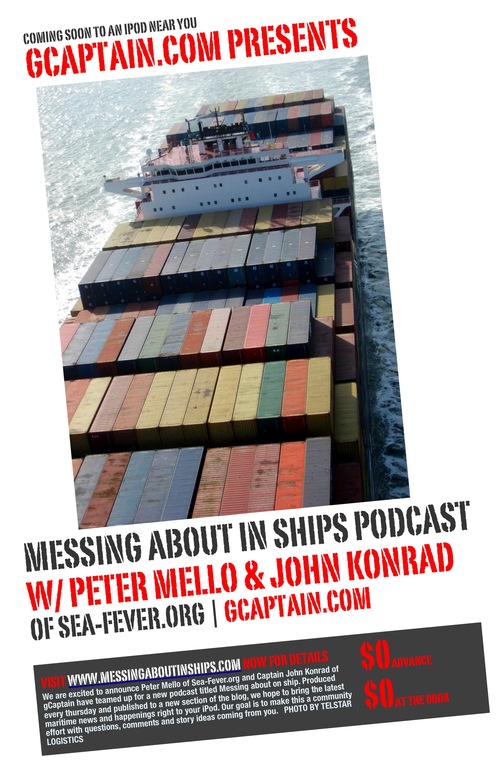










































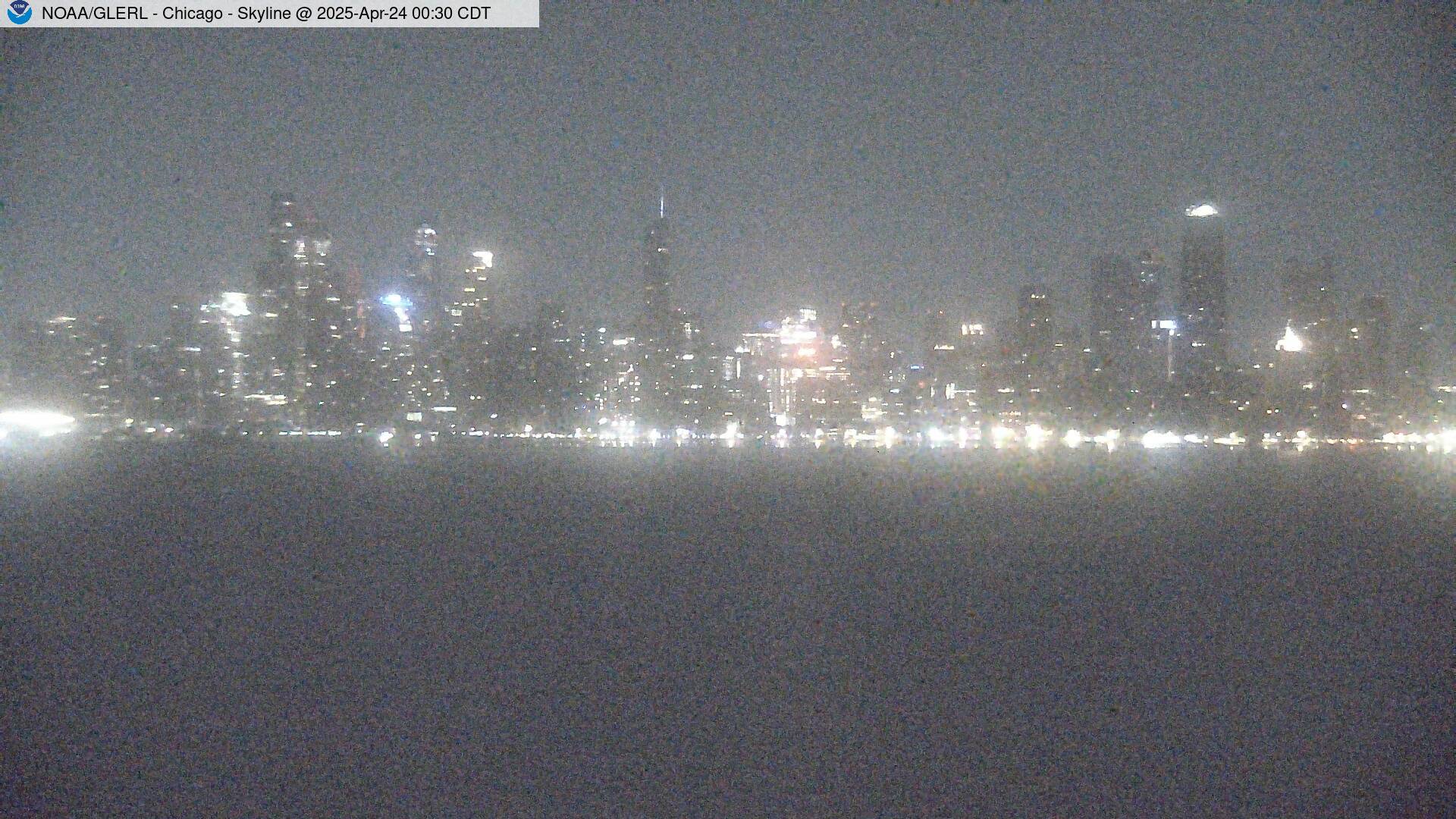













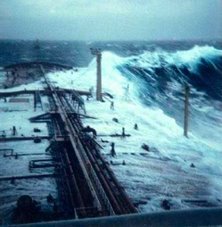
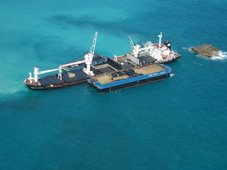


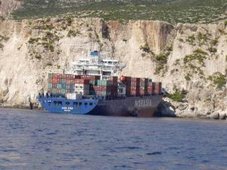




![Validate my RSS feed [Valid RSS]](valid-rss.png)